Ponte Vedra, FL July 2021
Before I begin, I want to give a shout out to Randy for the genius new name of our blog. And I apologize up front for any typos, and any inaccuracies in my reporting. Feel free to make corrections, or email me with corrections. You guys are too smart for me sometimes!
From July 8 - July 10, 2021, after being forced to cancel the 2020 meeting, Manus gathered on the northeast shore of Florida. Present, physically, at this year's meeting were Randy, Kristin, Jon, Lou, Marc, Becky, Lana, Warren, Dan, Rob, Peter, and Milan. Tom joined a day later. Present, remotely, at various times were Phani, Jeff, Jeff, Adam, Sunjay, and Bassem. It was great being able to include those who could not physically make it to Florida.
Well, some of us almost didn't make it to Florida, thanks to Hurricane Elsa. She passed right over Jacksonville as some of us were navigating the highways or approaching the runway. Fortunately, all made it safe and sound.
And this was my commute to the conference. Not too shabby!
July 8 - Day 1
Lou started us off with a truly remarkable feat of teamwork and dedication. He presented a case of a combined face and double hand transplant. The patient is an 18 year old man who fell asleep at the wheel after working a double shift. He was pulled from his burning car with third degree burns over a large part of his body including his face and both hands.
A team of dozens of surgeons, anesthesiologists, residents, and nurses was assembled. One Saturday a month for eleven months the team gathered for full-length rehearsals. Detailed operative checklists were developed for each team. Longitudinal teamwork evaluations were performed and the entire team was debriefed after each rehearsal. The procedure was tweaked and the whole thing was repeated the following month. Materialise was utilized for the forearm reconstructions, which, much to Lou’s chagrin, could never be perfect due to bone size discrepancies, IO space discrepancies, and the rotation of the bones. SPY (by Stryker) was used to assess vascularity using fluorescence angiography. There was also the antigenic burden to consider - 2 hands and the face are the equivalent to 2 arms. They developed an immunologic suppression strategy. They used Tacrolimus (I still need to look it up) which helps improve nerve regeneration in addition to immunosuppression at a very low dose.
One of many news reports on the surgery:
https://www.youtube.com/watch?v=KaMXUXasnfs
I’m not sure if I got all those details right - feel free to make corrections, Lou! After nearly a year, a suitable donor was identified and the team was called in. The surgery was an incredible success. Lou showed videos of the patient’s range of motion, and even showed him lifting weights. Truly remarkable. Congratulations, Lou!
Dan then presented his strategy for the management of spasticity. Currently, treatment consists of surgery, botox, and rehab. And this is pretty much what is done almost everywhere. BUT, way back in 1913 German surgeon Adolf Stoffel said “No more tendon transfers!” Did we listen? Clearly we did not. Stoffel talked about nerve surgery instead of tendon surgery.
Selective denervation: you only need 20% of axons to have a normally functioning muscle. You can do 60-80% selective denervation without sacrificing muscle function. Go as distally as possible. Use a nerve stimulator like the one by Checkpoint. Volitional control can be rested by C7 transfers. Rehab with robotic exoskeletons. Dan, like Adolf, is encouraging us to think about nerve injury a different way.
Dan’s spasticity presentation on YouTube:
https://www.youtube.com/watch?v=sY4qSwrXKRM
Also, see littlearms.org for specific surgical techniques like the flexor-pronator slide. Hopefully we will be seeing fewer wrist fusions and tendon transfers for the treatment of spasticity, in both children and adults. Thanks, Dan!
On a side note, a discussion of personal headlights took place. Some recommendations included Designs for Vision, Lumadent, and Surgitel (lighter than the DFV version). These came highly recommended by several members. I know I’m getting one for my aging eyes!
Rob presented his preferred technique for SEFCF - parallel k-wires between the capitate and lunate to cause mid carpal settling and fusion. “Stiff and stable - that’s the Kaufmann way!” To make this technique work, you have to translate the capitate ulnarly to have as much surface area as possible between the capitate and lunate. With parallel wires, there is continuous compressive forces across the two bones - not possible with crossed k-wires or staples or any locking construct. Fusion occurs by secondary healing rather than primary healing. Think DHS. Dorsal wrist exposure, insert pins antegrade, pull through, rescue capitate over lunate, correct DISI deformity, advance pins. Bury pins to avoid extensor tendon irritation. Obtain distal radius bone graft as far radial as posable - to avoid taking away bone stock directly underneath the lunate facet. Post-op protocol: splint for 2 weeks, then cast for 4 weeks, removable thumb spica splint. K-wires removed at 10-12 weeks post-op. In a review of his cases, he had 100% fusion (64/64). May be a good alternative for those with poor bone stock, smokers, and others with higher risk of nonunion using rigid techniques.
Discussion: Need to translate the capitate? Risk of losing ulnar deviation, as discussed by Scott Wolfe, who advocated leaving the capitate where it sits. Perhaps absorbable pins could do the same thing without needing to be removed in a second surgery? People got very excited until Jeff Y. chimed in on Zoom warning of osteolysis around absorbable pins. Dan then suggested terminally threaded pins cut flush with the bone. This could also potentially avoid the second surgery. But there is a risk of pin protrusion if there is too much collapse.
Others then talked about the use of staples for four corner fusions. Marc talked about using Synthes’s cannulated staples. Good for type I lunates; with type II, include the hamate in the fusion. But folks had issues with dorsal impingement with staples. Warren recommended burring a 2mm trough for the staples - you don’t lose any stability taking this amount of bone, and seating the staples like this avoids the problem of impingement.
Endo Pharmaceuticals - our sponsors for this year’s meeting.
They led a discussion about how things have changed in our practices over the last year plus. Volume still appears to be down for beds, and in New York City. Others seem to be back up close to normal in terms of volume. Many are still using Telehealth. But what is going to happen with this modality in the future? Will insurance still pay for these appointments? Will there be a time requirement? Will they pay for video but not phone? We discovered a little about our value within orthopaedics - hand surgeons were still busy but sports and joints were way down. Is that going to change our reimbursements? That would be a resounding NO!
They talked about the Elway campaign and how they brainwash, I mean encourage, patients with Dupuytrens to go to their website to find doctors who perform collagenase injections. Factsonhand.com. They brought their DC simulator used to train fellows. It was designed to simulate the actual feel of the needle going through the Dupuytrens contracture in contrast to the feel of the needle going into adjacent, normal, tissue. Some of us had our doubts about the accuracy of this device, and whether or not it really gave trainees the skills it was designed for. We discussed the barriers to using Xiaflex. Reimbursement, access, and risk were all mentioned.
Jon gave some tips n the actual technique for the release. He waits three days instead of the usual 24 hours. There is less swelling, less tension, and less bruising at that time. He uses an ulnar nerve block or no block at all, rather than injecting local at the cord itself. And when he is performing the release, he pushes the skin distally, in the direction of tension, in order to reduce skin tears.
Social time!
We adjourned for the day and everyone enjoyed the day by the pool, at the beach, shopping, golfing, and, I believe, fishing.
I discovered this little nugget in St. Augustine: Florida state song: "Old folks at home".
We reconvened at the West Lawn and everyone took part in Shoot for the Pin. We lost many a golf ball but only one club. And Jon came out the winner, coming within 2 meters of the pin.
Dinner was a delicious buffet, and this was when we really got a good look at how the Manus families have gown up. The boys are men; the girls are women; and we are as young and vibrant as ever!
July 9 - Day 2
Marc led off Day 2 with a new technique for thumb MCP arthrodesis. Tension band wiring is a popular technique for fusing the thumb MCP joint. But to get proper fixation, you need bicortical purchase with the k-wires. If you use k-wires with eyelets, like the ones that are in the Acumed elbow set, there is no need for bicortical fixation. Technique: use a cup and cone reamer (Acumed and Wright Medical both make them. They are the ones used for bunion surgery.) Shorten the k-wire to 40-45mm and pretrial with a 0.045 k-wire. Insert the k-wires retrograde through the metacarpal, then antegrade into the canal of P1. The Acumed k-wires are 0.057 inches - they make 0.045 wires for use in Japan. 2 2-0 fiberwire sutures are used instead of small wires as they are less likely to break. You can drill with a 16 gauge angiocath after removing the plastic hub. Then you can feed the fiberwire right into the angiocath - suck it out the other end using a Fraser tip sucker. Or, drill with a 0.062 wire and put the whole angiocath into the drill hole. Seat the wire with a cannulated snub-nose tool. Post-op: 2 weeks in a splint, then a removable splint and start therapy for flexion exercises. Increase activity at 6 weeks.
As usual, we went off on a tangent, and discussed various CMC arthroplasty techniques. 2 people present use the tightrope routinely for primary cases. Everyone else use some form of LRTI/APL suspensionplasty. Lou described his technique for MCP capsulodesis placing a suture anchor in the MC neck through a large incision that splits the thenars. He pins it in 30 degrees for 6 weeks. Randy talked about using the Acumed Acutwist threaded k-wires, designed for small joint fusion, like the DIP joint. They have variable pitched threads like the Acutrak screws.
Warren introduced a discussion of STT arthritis. Is it really isolated STT arthritis or is it an indicator of midcarpal instability? Check the lateral view fo DISI deformity. He presented a case where he fused the STT, the lunate extension was corrected and pinned to the radius, bone graft was taken from the distal radius, and fixed with crossed k-wires. He went on to a nonunion with resorption of the distal scaphoid. But clinically he is doing well. So what is the right answer? Many options: Excision of the distal scaphoid? (but not more than 3mm says Lou!); CMC arthroplasty with partial trapezoidectomy?; Resect small portions of the trapezium and trapezoid? 4 corner fusion? PRC? Or inject the joint until it auto fuses as with a carpal boss, suggests Tom. No right answer.
Rob then introduced us to arrch orthopaedics.
Over the last several years Rob has presented to us his observations of the shortcomings of total elbow replacements. We have heard about the evolution of design, modes of failure, success rates, etc. This year, Rob has presented us with a solution. For the last 10 years he has been working on a revolutionary design for a total elbow. Through thousands of hours of pencil drawing, designing, CAD drawings, refining, learning 3D software, machining, iterating and reiterating, Rob came up with something that could solve many of the issues currently plaguing existing total elbows. Some details include a cylindrical ligament retention device, a special drill bit to prevent breaking the humerus, a notched screw for the posterior flange, exchangeable polyethylene without having to take down reconstructed ligaments, a rotary broach for the proximal ulna, just to name a few. But, because it would not be commercially lucrative, he has had to go it alone, with support only from his wife Heather. They approached the FDA, and after many proposals and submissions to the FDA, the design is almost at the point of approval for early feasibility studies. Fingers crossed! Rob passed around an example of the implant, and I have to say, I am in awe. We salute you, Rob, for your dedication and tenacity to do something right, and to make something better.
Phani spoke about Elbow MCL reconstruction. A procedure that is done in a select population of elite throwing athletes, who place an extreme values force on the MCP during late cocking and acceleration. Get an MR arthrogram - shows the injury much better. Do not make surgical decisions based on MRI alone. Measure the lengths of the tendon graft limbs carefully. Transpose the ulnar nerve only if they are having ulnar nerve symptoms. Protect the MABCN, protect the ulnar nerve when drilling the distal tunnels. Open the native ligament to see the joint. Make sure the bone bridge is at least 1cm from the joint line. Use the distal drill guide (in the Athrex set) but make sure the ulnar nerve is not trapped underneath it. Curette the distal tunnels to have smooth edges, then use the chamfer from the set. Place a drop of mineral oil on the leading edge of the graft to help it pass through the tunnels. If there is no palmaris, or if it not good enough quality, use gracilis. Drape out the left every time. Some are experimenting with allograft for this, but there are no long term results yet. Use the distal hook retriever to pas the sutures - also in the set. Make sure the bone bridge between the proximal drill holes is at least 5mm. Beware of the ulnar nerve! Dunk the first look in all the way, measure the graft, short enough to just fully seat it. Tension the graft with the elbow in 30 degrees of flexion, and full supination to reduce the ulnohumeral joint. Fine tune with side to side sutures as tight as possible. Can repair the distal portion of the native ligament, place the graft on top, then repair the proximal part of the native ligament over the graft. If there are posteromedial bone spurs, salt the capsule longitudinally, just posterior to the medial epicondyle (protect the ulnar nerve!), remove the spurs, repair the capsule, then proceed with the reconstruction.
Comments: Rob and Warren suggested using the 2nd or 3rd toe extensor if there is no good palmaris. If you take it from the level of the ankle, there is no toe lag, and it is easier to harvest than the gracilis. Jeff Y. added to take the contralateral PL in pitchers. That way they can’t blame you for any effect on their pitching. Randy suggested making anterior and lateral drill holes, and not posterior, to further protect the ulnar nerve. As long as there is at least a 5mm bridge. Lou brought up the topic of adding fiber tape or other internal brace material. Pretty much everyone was against it because it stress shields the ligament, and the ligament needs those stresses to heal properly. The use of these devices are too often driven by industry.
Post-op algorithm: splint in 70 degrees of flexion. At 10 days begin AROM. At 4-6 weeks start strengthening. At 3-4 months begin throwing. 12-18 months are the final stages of recovery, when they can get back to elite throwing.
Treasurer’s report
Marc reviewed for us our current state of finances. We received $20,000 from Endo for this year’s annual meeting. Prior to that we had $15,000 in the bank.
We should be receiving notification for this year’s dues soon. (Did we already?) Dues are now $500/year.
There was a short discussion or question about how funds would be used during the ASSH and AAHS meetings, but I do not have any conclusions to that discussion. If anyone remembers what came of that, please let me know!
Review of Bylaws
Given the current state of affairs, with the cancellation of last year’s meeting, and the ongoing concerns regarding COVID, we decided that everyone present at Ponte Vedra and everyone who participated via Zoom, would be moved up to a Manus rating of 3. (Recall, the rule was you have to attend a meeting at least once every 3 years in order to maintain good standing within the club. When you attend, your score is 3. For every year you fail to attend a meeting, your score goes down by 1. When you reach 0, you are at risk for being voted off the island.) So all who participated in person or virtually are now at a 3. Everyone else gets a buy for this year, and their scores remain what they were as of 2019. Moving forward, in-person attendance moves you up to a 3, while virtual attendance gets you a buy.
Realizing that our little club is at the ripe old age of 15, and that our membership has remained pretty stable over the last few years, we voted to loosen the rules when it comes to voting members out. If your score goes down to 0 but you want to stay in the club and continue paying dues, you will not be voted out.
Similarly, we loosened the rules on total number of members. This has been a subject of debate for the last few years, too. We had a hard cap at 30 members. We are at that number now, if everyone continues to pay dues. However, if there is a potential new member that we want to invite, who would add value to the group, who is within the fellowship time frame (2000-2010, I think?), then we should feel free to nominate that person and vote him/her in, even if that puts us over 30 members.
Overseas outreach programs: We now have foundational funding through Touching Hands of up to $15,000. We also have $100k through a non-profit run by Dan for this purpose specifically. This fund his now run independently by Manus. We have established ourselves in Cuba, and are now considering Costa Rica, or a domestic Indian reservation for future programs. Unfortunately because of COVID, the spring 2022 trip to Cuba has been postponed, hopefully to be rescheduled for the fall. When things clear up and the pandemic settles, we will begin exploring options in Costa Rica.
Next year
Nominations for next year’s meeting were as follows (looking for a “west coast” location”:
Dude ranch
Hawaii
Monterey
San Diego/So Cal
Laguna beach/Orange County
Santa Barbara
Ojai Valley
Napa/Healdsburg
Flathead Lake Lodge, Montana
Vancouver
Bryce/Zion
Park City, Utah
Disneyland/Universal
Rush Creek Lodge Yosemite
The afternoon was spent at the pool (again), at the beach (again), or fishing for comb jellies from kayaks along the famous Florida waterways.
We tried to gather the families for a group photo before dinner but were thwarted by this:
But only minutes earlier there was this:
Fortunately, no one had actually made it to the beach before the rains came. We did manage to get these though!
Damn we are a good looking bunch! Dinner was limited to adults only that evening. We dined on delicious local cuisine specially chosen for us by Ali. President Marc said a few words extolling the awesomeness of this group.
Then there was a spontaneous outpouring of Manus love as members and their SOs took turns expressing their gratitude for this family that we have assembled. We reminisced about how we got started with Manus, and about how it has come to be such an important part of our lives. This was possibly my favorite part of the whole meeting. Excuse me - I need to get myself a tissue.
July 10 - Day 3
Warren led us off with a discussion of PROMIS in hand surgery. UR has been collecting data since 2015. The goal is to measure value in healthcare. The example used was breast cancer surgery and the difference between patient priorities and physician priorities. What’s most important: for example, keeping the breast, looking good without clothes, avoiding a prosthesis, living as long as possible. He introduced us to the concepts of MCID (minimal clinically important difference - smallest change that the patient can detect that is beneficial) and the MDC (minimal detectable change). MCID must be greater than MDC in order to show that the patient has improved substantially. This is a biopsychosocial model. The mental aspects of health play an important part in how the patient does - resilience, depression, anxiety, pain interference, coping skills. Not just how things look on X-ray or final path results. Patients with depression and higher pain interference levels recover more slowly and not to the same extent. PROMIS is based on this biopsychosocial approach, and is comparable across specialties. The test - VOICE (Validated outcomes in clinical experience) uses “Smart testing” - the answer to question 1 determines what question 2 will be. Takes 5 minutes to complete. Patients use an iPad given to them at check in, and the results immediately sync to Epic. The trends discovered in this way are more useful for individual patients and assisting their recovery.
Adam led a discussion about “teaching” in the OR. It is a different challenge now than it was in years past. What do you allow residents to do in the OR? Is it different now, with the reduced work hours? Do you use simulators or virtual reality technology? What do you do to manage your anxiety when students or residents are operating? Do you have lower expectations for medical students and residents with the 80-hour work week, remote conferences, and a general feeling of entitlement? And what can be done about it??? Hats off to those of you who do this on a regular basis. It takes a special talent, and a degree of patience that I am unfamiliar with.
Marc then introduced us to Restor3d - 3D printing for cutting guides, as well as titanium and cobalt chrome plates and other implants. Use CT scanning and 3D modeling of the uninjured other side to create the guides or implants. He showed a case of a 28 year old Air Force mechanic with a distal radius malunion.
Others chimed in with tips and tricks:
Trimed’s magic screwdriver to get length. Can buy one separate from the tray
Laminar spreader for distal radius fractures - place between radius and ulna to push radius radially - can combine with large fracture tenaculum
He presented a case of a both bones forearm fracture that got infected and went on to a nonunion. Attempts to repair this included a free fibula to the radius and ICBG to the ulna. That failed and then the patient started smoking (!). It was denied that he did not deserve a second free fibula. Fixed with a 3D printed plate with screw holes placed to avoid the old screw holes, and an interpositional gyroid graft. Great flexibility in sizes and shapes. Just another awesome addition to our fracture fixation armamentarium.
TSUNAMI presentations
My thanks to whoever had this photo (Tom?)!
Tom: 64 yo fell and sustained an elbow dislocation. Didn’t show up to surgery, yelled at nurses, played candy crush during all visits. Eventually underwent LUCL repair and radial head replacement. At first post-op, dislocated. Problem - he’s only available to come in one day a month. He undergoes revision, reconstruction, with an internal joint stabilizer, and placed in a LAC. First post-op - doesn’t look good. Cast removed, splint applied, but the IJS is becoming loose. Surgery #3 (2 months later bc he couldn’t get a ride) - ulnohumeral spanning plate. First post-op - seroma which gets drained. U;nohumeral joint is eroding, radial head is coming out possibly? 6 months out now. Hoping for a stiff, stable elbow…
Kristin: 66 yo woman with RA, IDDM, obesity, h/o prior soft tissue infections develops CTS with polyneuropathy and neurogenic pain. She undergoes CTR under WALANT in the office. Protocol for surgery on RA patients I followed - holding meds, etc. White pasty stuff is found in the SQ tissue - likely from prior steroid injections. Path negative. 4 weeks post-op - swelling, fluctuant, some persistent CTS symptoms but no pain. Undergoes emergent surgery for wash-out and admission. ID consult, PICC line, RA meds held, second wash out. Cultures grew MSSA. A month later, the wound dehisces. Another wash out, now growing pseudomonas. More antibiotics. Things are healing and going ok, but there’s still a small area of fluctuant. Still on ABX. The wound opens again and drains serous fluid and now with pain in the thumb. Acute FPL suppurative flexor tenosynovitis. Back to the OR for another I&D including FPL. Frank pus. Second wash out. Home with PICC line again. Cultures grew pseudomonas but now resistant to ABX. And the saga continues…
(Comments: Marc - increased infection rate in diabetics with HbA1c >7.8/ Make patients get it under 8 before operating. Lou - wait >90 days for surgery after a cortisone injection to reduce risk of infection. Maybe 6 months for patients who also have DM or RA? Warren asked - would that change a patient’s desire to have an injection if they have to wait 3-6 months before they can have surgery if the injection fails??)
Warren: 63 yo woman with psoriatic arthritis, most symptomatic in the index finger. Failed PIP arthroplasty in the long finger and then had a fusion. Underwent a DIP fusion with k-wires. Resulted in bone resorption so k-wires replaced with a screw. There was a crack - screw went through the base of P2. The PIP was already eroded and deformed. Now she has pain at the PIP joint too. Screw removed. Now she has undergone 3 surgeries, has a painful nonunion at the DIP joint, and no more motion at the PIP joint. She is unhappy and would not have done it again.
Dan: Icarus tsunami. I’m going to get this one all wrong, I’m sure. 2 yo girl with bilateral tibial hemimelia, right radial deficiency, with a normal left hand and left foot. In an attempt to improve her function, as series of creative spare parts surgeries were performed, including politicization of the right foot with deepening of the webspace to create a “hand”, creation of a right elbow with 2 MTP joints. She is able to hold a pen with the foot/hand, but the elbow loses all motion and the skin around the skin paddle dehisces. She is treated with local wound care, but then the left foo becomes gangrenous. The left leg is amputated through the knee. She dehisces at the amputation site. She has pain, is treated with local wound care, and improved nutrition. The “elbow” is fused and the joint is “dislocated”. The patient wants movement. HO is excised and the joint can move 15-90 degrees and is stable. But it auto fuses again. Now she can’t walk, has no movement at the elbow, but has a foot/hand that she can use.
Milan: 33yo with a 9 month history of swelling at the MCP joint, no trauma and normal bloodwork. Very tender but it doesn’t look terrible. X-rays are not bad. MRI shows and effusion and synovitis, and erosion at the MC head. The MC head looks edematous. Surgery - synovectomy, cultures and biopsy taken. Nonspecific path results, but scant E coli grows. (!) Seems to be getting better, but then symptoms start to come back at 3 months. At 6 months symptoms are back to the original symptoms. Cortisone injection doesn’t help. New X-rays show changes in the MC. Repeat MRI not much different from the first, but the area of erosion looks bigger. ID consult - 6 weeks of IV abs, followed by 2 weeks of PO abx. It seems that ibuprofen is the only thing that relieves the pain. And it’s worse at night. CT scan and then return to OR 1 year later. Cultures negative. Path - osteoid osteoma. Symptoms resolved.
Winner of this year’s Tsunami award - DAN!


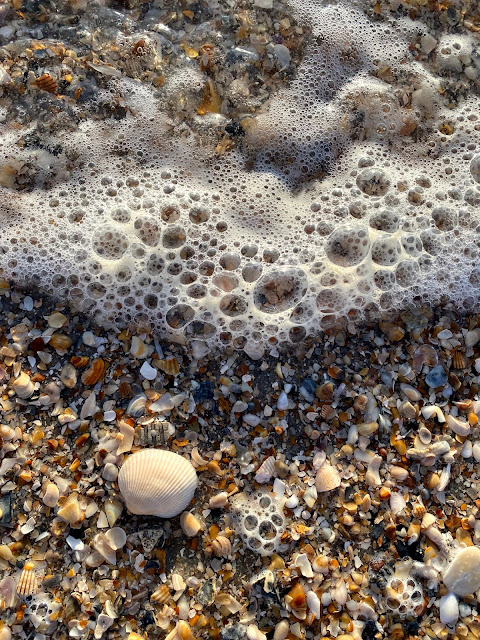
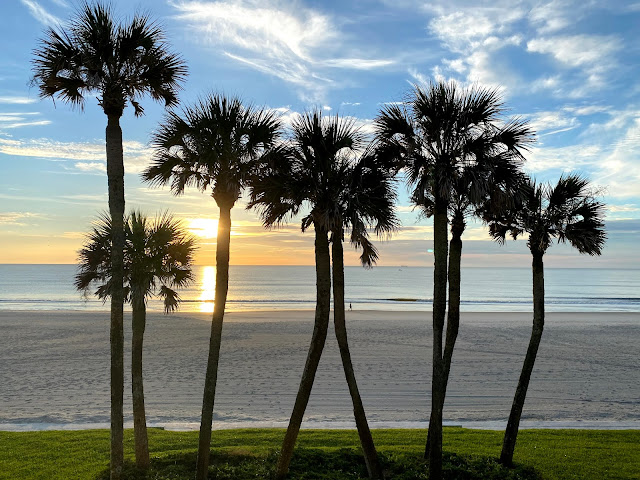
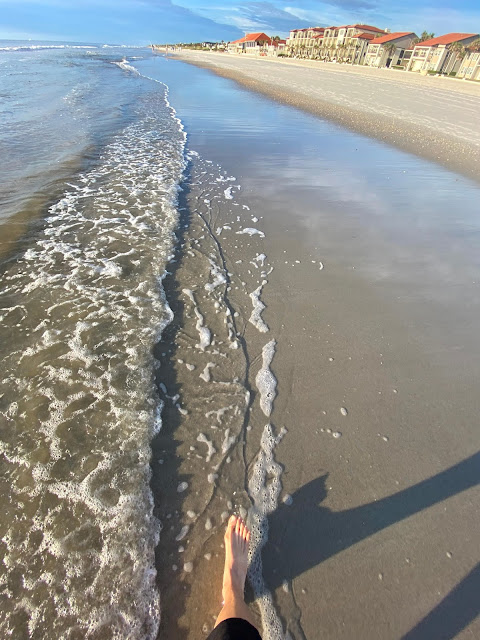






















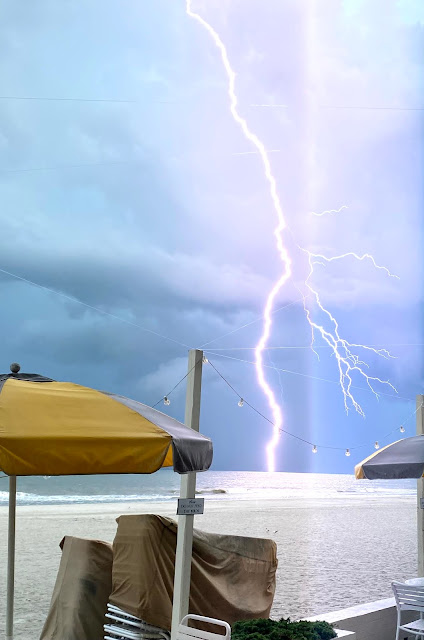




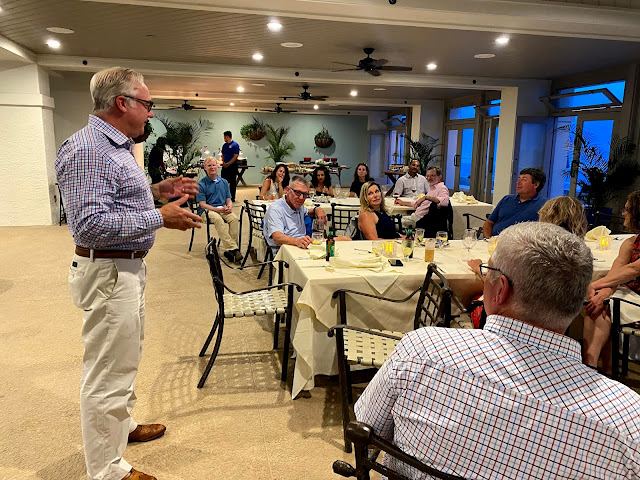










No comments:
Post a Comment